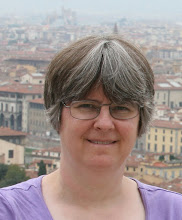Nitobe Memorial Garden - honoring a Japanese Christian
 This is the classic view of the Nitobe Memorial Garden on the UBC campus. It's a quiet place of reflection amidst the busyness of a major university. It was built to honor Inazo Nitobe (1862-1933), a Japanese Quaker, philosopher and statesman, scholar and agriculturalist, who early in his life had expressed the desire to be a "bridge over the Pacific." "He devoted much of his life to promoting trust and understanding between the United States and Japan," and served for a time as Under-Secretary General of the League of Nations.
This is the classic view of the Nitobe Memorial Garden on the UBC campus. It's a quiet place of reflection amidst the busyness of a major university. It was built to honor Inazo Nitobe (1862-1933), a Japanese Quaker, philosopher and statesman, scholar and agriculturalist, who early in his life had expressed the desire to be a "bridge over the Pacific." "He devoted much of his life to promoting trust and understanding between the United States and Japan," and served for a time as Under-Secretary General of the League of Nations.
Most people who visit the garden don't realize Nitobe was a Christian. According to Wikipedia, "he was converted to Christianity under the strong legacy left by Dr. William S. Clark," the first Vice-Principal of Sapporo Agricultural College (now, Hokkaido University), where Nitobe was educated, though he and Clark never actually crossed paths. Nitobe and some friends of his who became converts to Christianity at the same time were baptized by an American Methodist Episcopal missionary, Bishop M.C. Harris. Nitobe helped found and was the first president of Tokyo Woman's Christian University.
Nitobe is perhaps most famous for his work Bushido: The Soul of Japan. He called for Christianity to be "grafted onto the trunk of Bushido." ("Bushido, meaning 'Way of the Warrior,' is a Japanese code of conduct and a way of the samurai life, loosely analogous to the concept of chivalry.") Nitobe believed that the Japanese concept of giri (duty) is "infinitely inferior to the Christian doctrine of love." He says that giri (literally "Right Reason") "should be the 'categorical imperative' for moral behavior" but that it had "degenerated into a vague sense of propriety" in an "artificial society." He draws parallels between the bushido ethic and the Christian West's "presumption against force, limiting the conditions when force can be applied, and conduct in war." That is the essence of just war theory, though he didn't use that term. As a Quaker, he leaned towards the avoidance of force altogether: "fighting in itself, be it offensive or defensive, is, as Quakers rightly testify, brutal and wrong."
In 1884 Nitobe traveled to the USA to study. There he met a young Quaker woman, Mary Patterson Elkington, and they were married (against the wishes of both their families) at the famed Arch Street Friends Meeting House, in Philadelphia.
As for his Quaker sentiments, Nitobe writes, "The starting point of Quaker teaching is the belief in the existence of the Inner Light...the presence of a Power not our own, the indwelling of a Personality, other than human, in each one of us." He points out that such an idea goes back to the most ancient forms of mysticism. The Buddhist mystics make reference to it, but "Quakerism stays within the family of Christianity....Unlike Orientals, George Fox and his followers conceived...of light as a person." Nitobe recognizes a superiority in "the revelation of Godhead in the person and life of Jesus Christ.... We read Lao-tze; we read Buddhist saints; I've stud[ied] Oriental mystics... [By them] we are brought very near to the idea of redemption, atonement, salvation...but we feel that we have not reached our finality....Yes, we see light, but not the one thing essential-perfect, living Personality."
Nitobe died in Victoria, B.C. while visiting Canada in 1933. The Nitobe Memorial Garden, which opened in 1960, was designed by Professor Kannosuke Mori of Chiba University, a distinguished Japanese Landscape Architect, at the recommendation of the government of Japan. He conceived it primarily in the Shinto tradition, but he gives reference to Nitobe's Christianity in the "remembering lantern" near the waiting pavilion. "This is a so-called Oribe lantern, first designed by the notable tea-master, warrior and designer Oribe Furuta (1544-1615). At the base of this lantern, partly covered by earth, the figure of a Madonna is visible. Christian icons hidden at the base of Oribe lanterns enabled Japanese Christians to worship covertly. The history of Christianity in Japan goes back to 1549 when the Jesuit priest Francis Xavier landed at Kageshima. At first, driven by a desire for Western firearms, numerous warlords converted. Subsequently however, the new religion was suppressed, at times brutally, hence the covert worship with Oribe lanterns."
Nitobe was honored in 1984 with a new Japanese 5,000 yen note bearing his image (superseded in 2004).
Sources: Wikipedia and NationMaster encyclopedias, Nitobe Garden's bio of Nitobe and other pages on their site; "A Japanese View of Quakers" by Inazo Nitobe; Prophets of Peace by Robert Kisala; A Portrait of Two Founders by Steven Elkinton (Friends Journal, October 2007); Nitobe Memorial Garden page on British Columbia Garden Tour site; and any other links above not repeated here.



2 comments:
I have walked through this garden many times but never knew it was in honour of a Christian. Thanks for bringing this information (and much more) to our attention.
is this where we went for our walk in November? fond memories!!
Post a Comment